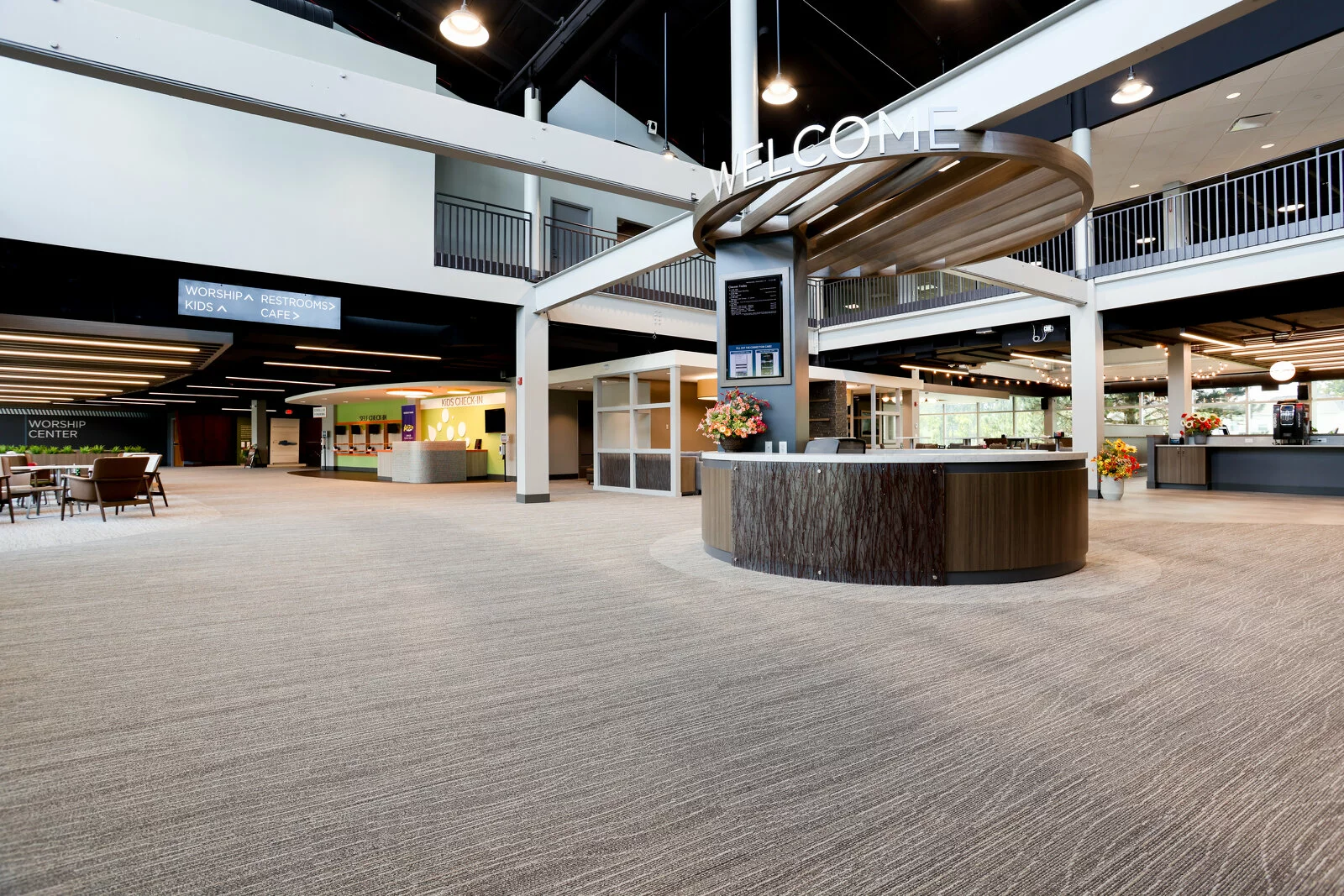Our church lobbies play a critical role in building community by giving people space and comfort to build connections, which is an essential aspect of growing together as the Body of Christ. Our new resource, Church Lobbies: 6 Zones for Connection, breaks down six zones that can help your church lobby be a place that not only helps grow relationships, but encourages people to practice hospitality and generosity.
In this post, we’ll talk about Welcome and Next Steps Centers—two zones that play a critical role in creating positive first impressions and equipping people to grow in their faith.
The Welcome Center
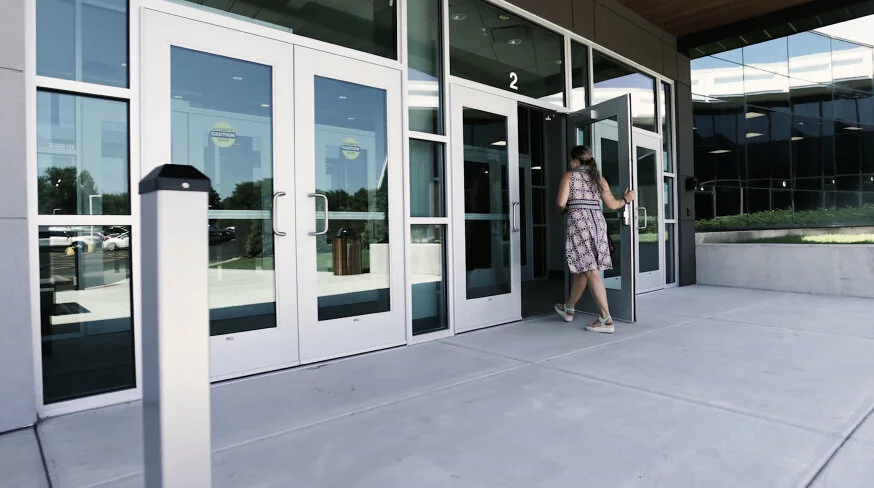
What kind of first impression is your church conveying before someone even enters your building? Upon entering the building you want to make sure people are met with a positive experience, which will help them feel confident navigating your space.
Visible signage and clear drop off points into the building, as well as accessible entryways for people of all abilities are crucial to establishing a positive church experience.
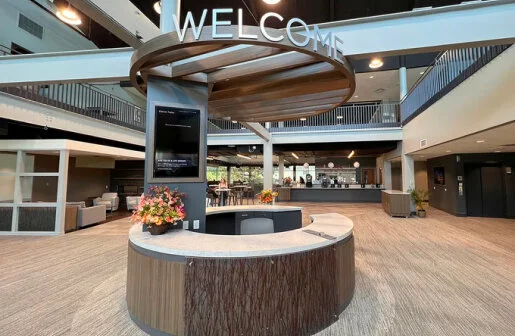
Learn how your lobby can help build a culture of radical hospitality
Consider creating casual groupings of furniture around your welcome center. This allows people to navigate the space at their pace and invites them to relax and take some time to connect with others. Whatever type of welcome center you choose, make sure it has easy access from the front door and clear entry points to other physical areas of the building, such as worship, kid’s check-in, classrooms, and restrooms.
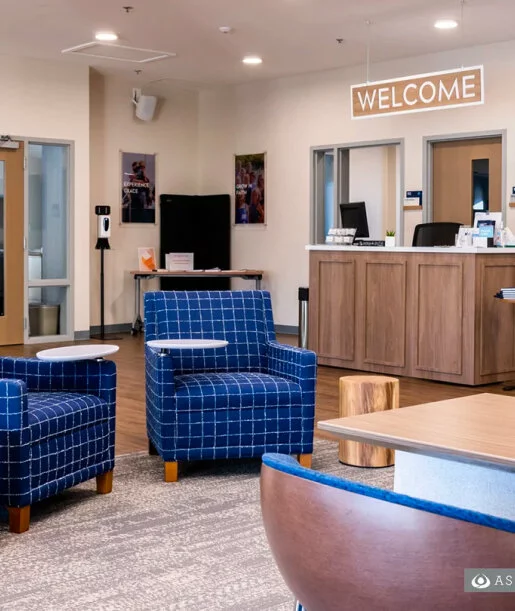
The Next Steps or Action Center
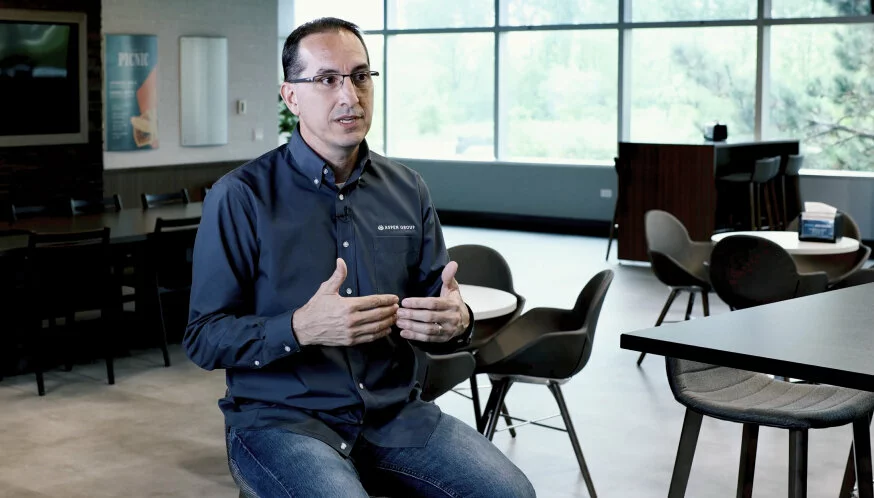

In worship, we’re often inspired, convicted, and encouraged to take a next step. That could mean signing up for a missions trip, or joining a small group, or looking into volunteer opportunities. Having a Next Steps or Action Center in your lobby, with close proximity to the worship venue, gives people an opportunity to engage and take the next step in their faith.
Next Steps zones can look very different depending on how people will navigate your space. You may want to have a designated area where a small group or missions leader is available to answer questions and help sign people up for ministry opportunities. These live-person interactions are great for Sundays when people are feeling inspired and motivated to seek out ways to live out their faith. For those less busy times, you might want to have an area outfitted with monitors or touchscreen devices where people can explore on their own. Some churches offer books and take-aways at various spots in their café and lobby space.
The Next Step zone is an opportunity to help people to grow in their faith, get involved in ministry, and take on leadership roles. Your lobby is pivotal to welcoming people in, helping them to make deep connections with others, leading them to worship, and engaging them in seeking out ministry opportunities and growing in their faith.
Want to dig deeper into ways you can make your church lobby a space that can help build relationships, cultivate hospitality, and inspire generosity? Download the Free PDF resource!
